Shanghai-“Taizhou-“Hefei-“Gaoyou-“Shanghai
Through Jiangsu, Zhejiang and Anhui, strange routes, 7 days 1 person’s lonely trip
This trip was a bit of a spur-of-the-moment trip, and there were many serendipitous reasons why it happened.
- I still have a lot of days left on my annual vacation.
- Suddenly there’s a travel and lodging allowance that must be used up this year.
- Wait…
So I didn’t do much planning or preparation before the trip, a lot of things were on the fly, and the destination was decided one day after swiping on Shakeology.
From Shanghai
We left the house at 9:30 and started with a mid-morning meal at the Sun Wong Tea Restaurant by the house.
I got on the subway at 10:00 and changed trains as suggested by Gordon, and the transfer scheme was actually not quite the same as the line I usually take.
Got out of the subway at 10:38 and into the waiting area at 10:47. Looks like I was out the door early.
When I got to the waiting area, I realized that my cheap headset Bluetooth (Jabra E3), which I’ve been carrying for a few years, is really bad at resisting interference, and the Bluetooth breaks when there are a lot of people in the area.
Because of the late booking, only waitlisted to buy a seat from Shanghai to Shaoxing, the latter part of the ticket has to make up. The seat of the standby ticket is indeed not good, just next door to the toilet.
My position is 3D, next to the 3F is reserved for the seat of the police, empty from Shanghai to Shaoxing, wait until I have no seat, the police also came to rest, really angry with me.
The train arrived at Taizhou Tiantaishan Station at 14:26 sharp.
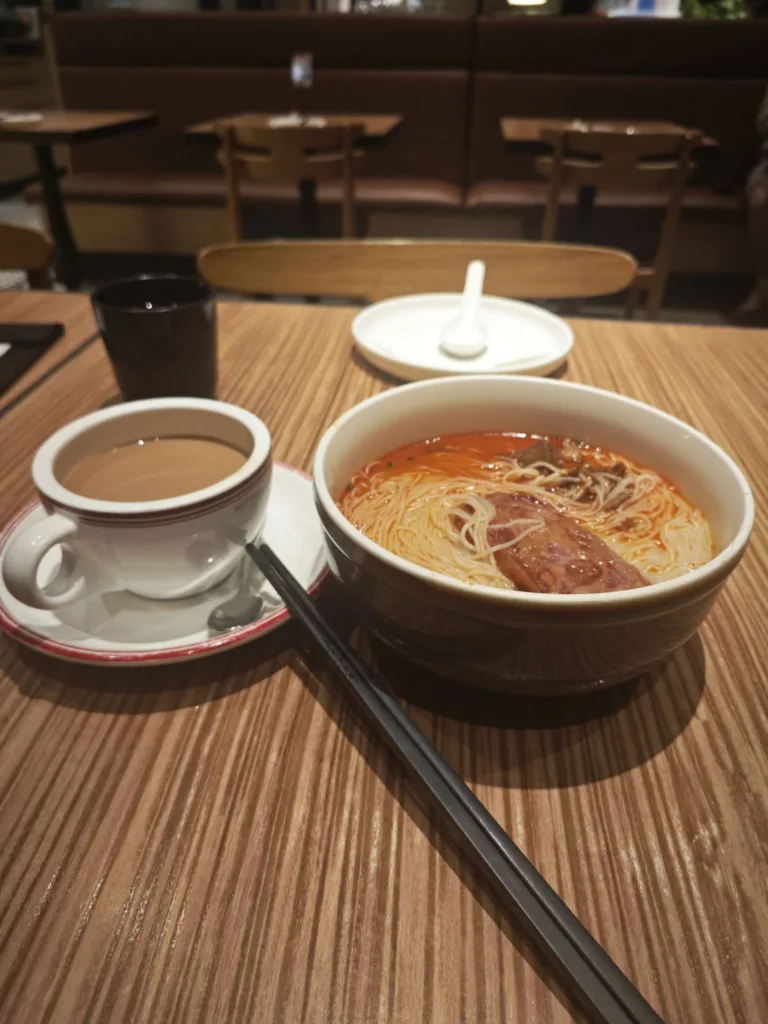

Taizhou is known as “the place where the stars of Santai are divided”, the name comes from the “Santai” star officials in the sky, and “Santai” has become the elegant name of Taizhou.
- In ancient China, people divided the sky into a number of asterisms and corresponded to geographic regions, believing that the good fortune or bad luck of different regions was related to the operation of the corresponding asterisms. This concept is known as “division of the field”.
- Santai Xingguan occupies an important position in ancient Chinese astronomy, and is an exquisite portrayal of the philosophical thinking of the ancients. There are six stars in the Santai Astronomical Officer, divided into the upper, middle and lower three stations.
- The name of Taizhou comes from the Tiantai Mountain in its territory. The name “Tiantai” appeared at a very early stage, and its name was derived from the star official “Santai”.
- Ge Hong, a famous Taoist priest of the Eastern Jin Dynasty, said in his “The Inner Part of Holding Park Zi – Jindan” that “the big and small Tiantai Mountain” is located in the county of Huiji, and that “the God of the world is in its mountain”.
- The position of Tiantai Mountain can be corresponded to the Santai Xingguan in the sky by the Polaris in the middle palace, and in the dividing field, it corresponds to the Doujiu and Niujiu among the star constellations.
- In the fifth year of Emperor Wu De of the Tang Dynasty, the state was named “Taizhou” after the famous mountains and waters within the state.
Tiantaishan Station is very small. It was only 14:30 when I left the station to get on the internet and arrived at the All Seasons Hotel Tiantaishan ten minutes later. check in, put my baggage, and went out again before 3 o’clock.
Mt Chilseong in Akagi prefecture, Japan
The first stop on this trip was Mt. Chilseong, which is the mountain that says, “The heavenly basilica is spread across the sky, and the five mountain ranges cover Chilseong”.
It was a 10 dollar drop from the hotel to the Mt. Akagi ticket office, and it was about 3:15 when I got in the door.
All the way up the mountain, on the way to the Zilai Cave, Jigong West Hospital and other places have been closed, a lot of places have eaten the closed door, 4:30 to the summit.
Into the door to buy tickets, concierge aunt told me that an hour and a half can tour the entire scenic area, I know this kind of talk to 50% discount to listen to, an hour and a half I just climbed to the top of the mountain, at this time the top of the mountain is empty. Only Liang Fei Tower stands alone. There are several places near the top of the mountain where you can look out over the rooftop view. At dusk, the forest below you is colored by the setting sun, and the tall buildings in the distance are reflected in the sunset. I don’t know when, I began to like the feeling of being alone on the top of the mountain looking at the sunset from afar, no matter whether the following is a remote small town, or a bustling city, this time to look at a little bit of barrenness, the feeling of desolation.
When I was descending the mountain, I saw that some people were still just starting to climb the mountain, I guess they were ready to climb up to see the night view of Taizhou, the night view should be very nice, but I was afraid of the dark, I went down the mountain early.
The same road goes up and down Mt. Akagi, the same way back, so I had a chance to take a closer look at the signage on the way down. Chilseong Mountain is the sixth of the ten major Buddhist caves in the Qingping Heaven. This kind of ranking, once you hear it is very bullish, what three mountains and five mountains in the world, the first few springs and so on. So I searched the specific information of the top ten caves, ten actually have three in Taizhou.
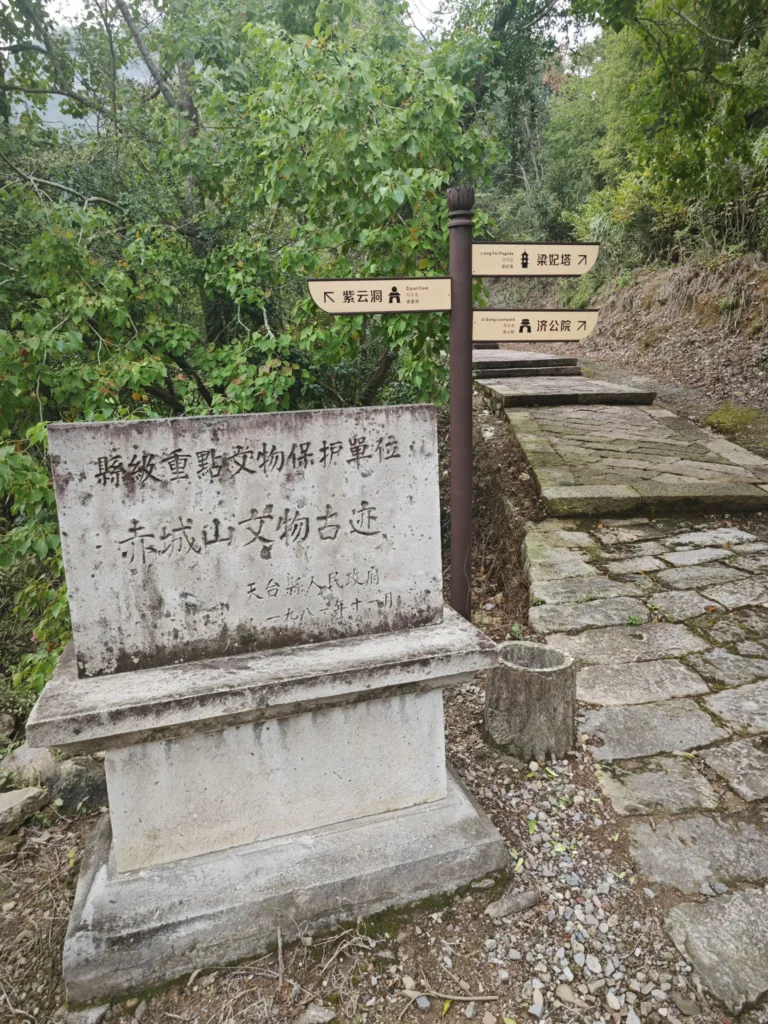

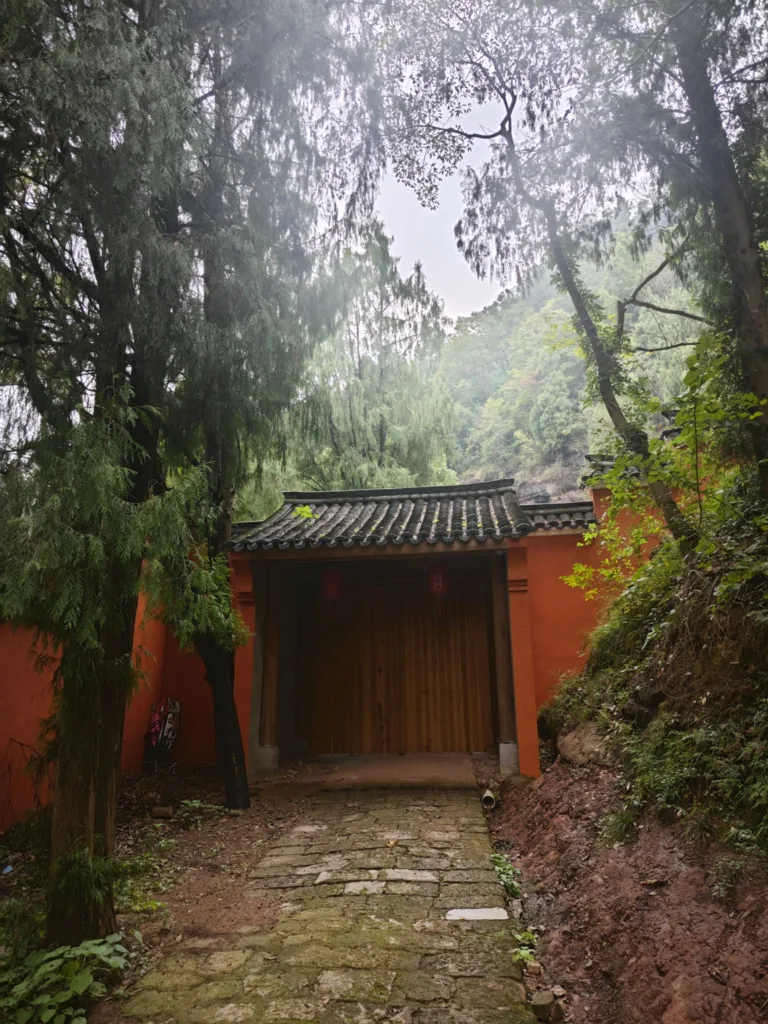
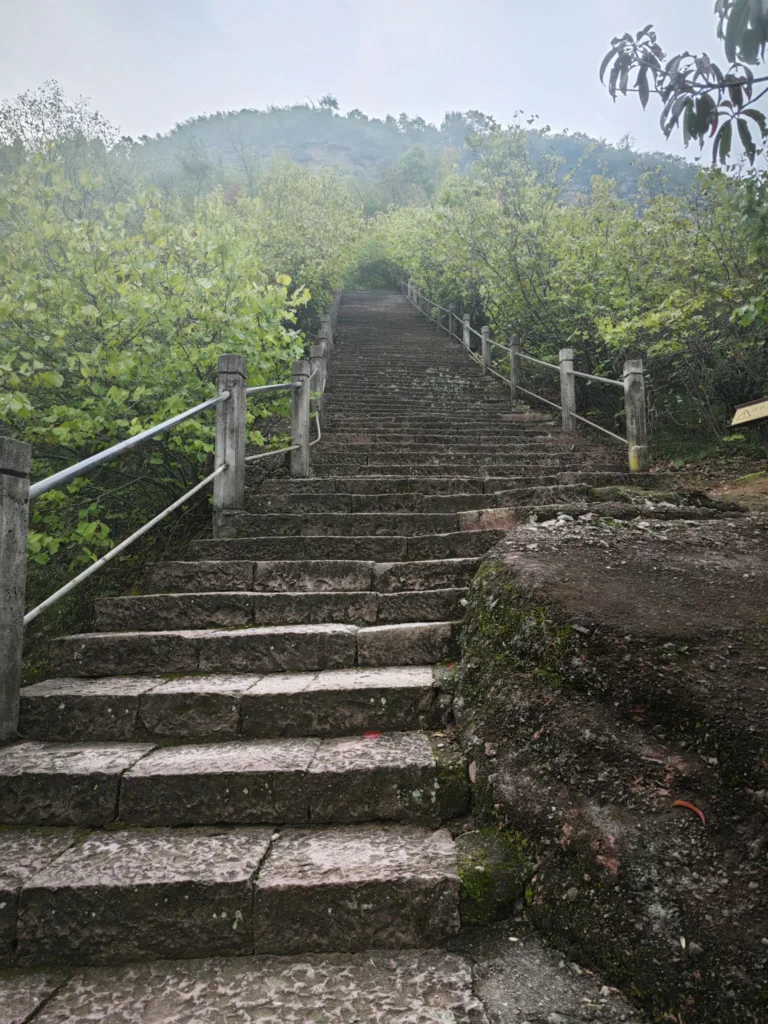
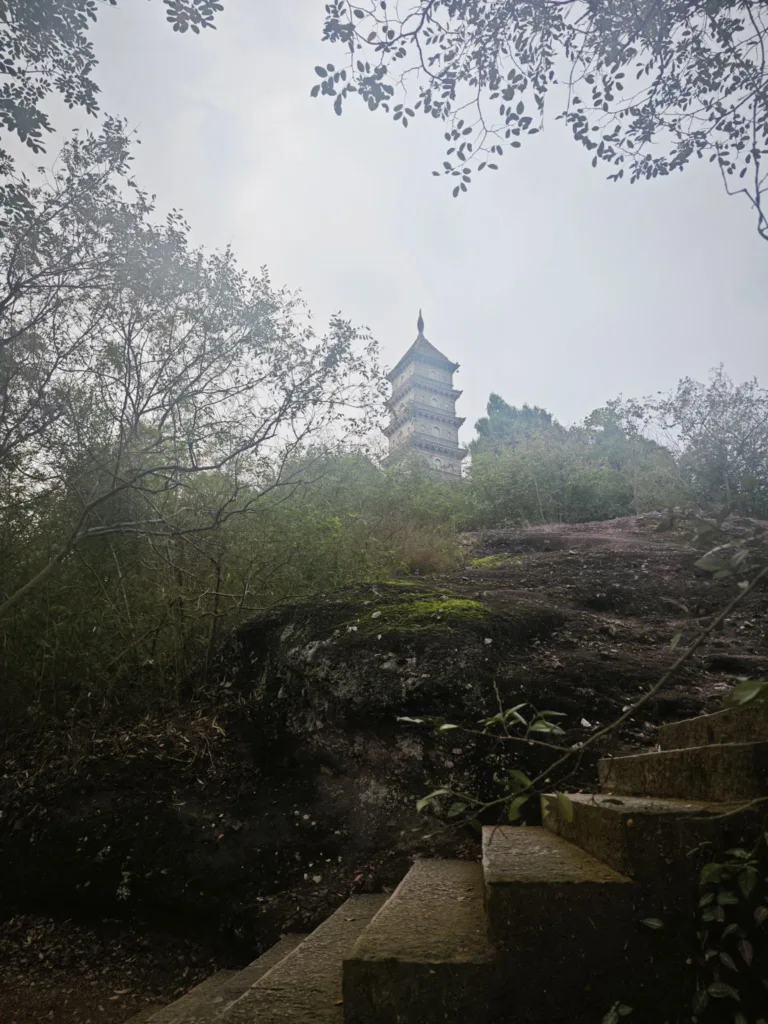
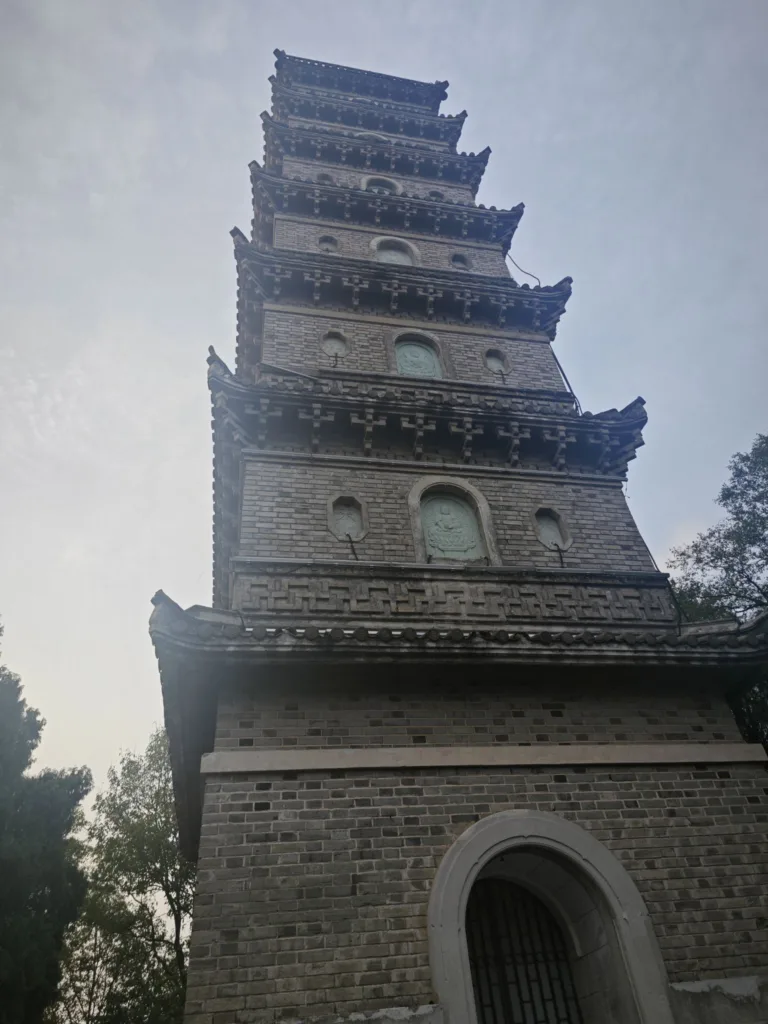
The top ten caves of Taoism are as follows:
- Wangwu Mountain Cave: also known as the “small clear sky”, located in Jiyuan City, Henan Province, Wangwu Mountain. WangYuShan peak elevation of 1715.7 meters, the legend of xuan yuan’s yellow emperor had prayed for heavenly sacrifices in this, after the nine heavenly basilisks to help defeat ChiYu, this mountain is also known as the altar of heaven mountain; there is also the story of Yugong yiShan also happened here.
- Guiyu Mountain Cave: Also known as “Great Empty and Bright Sky”, it is located in Guiyu Mountain, Huangyan District, Taizhou, Zhejiang Province. Legend has it that Liu Fenglin, the third son of Liu Bang, once lived here in seclusion, leaving behind stories such as riding a crane and curing the eyes with a feather, which led to the renaming of the mountain from Guzi to Guiyu Mountain.
- Xicheng Cave: also known as “Taiyuan Total Truth Heaven”, its exact location is controversial, Tao Hongjing’s “Dengzhen Hidden Secrets” recorded that it is suspected to be Zhongnan Taiyi Mountain.
- Xixuan Mountain Cave: also known as the “three elements of the day of the real extreme,” it is said to be located in the ancient Shenan over the boat mountain (now located in Anhui Province, Shexian County, Anhui Province, Jinchuan Township territory, in Zhejiang Province, Lin’an, Chun’an County, the junction of the two counties).
- Qingcheng Mountain Cave: Also known as the “Heaven of the Nine Chambers of Baoxian”, it is located in Qingcheng Mountain in Dujiangyan, Sichuan Province. It is one of the four most famous Taoist mountains in China, and it is said that the “Wu Dou Mi” religion started by Zhang Daoling in the early years originated here, and there is also a legend that Zhang Daoling practiced here and ascended to heaven.
- Chicheng Mountain Cave: Also known as “Ziyu Qingping Zhitian”, it is located in Chicheng Mountain in Tiantai County, Zhejiang Province. Chicheng Mountain is known as the Burning Mountain because of its unique natural landscape. It is the hometown of the Living Buddha Jigong, and there are many anecdotes of celebrities and poems left by writers and artists.
- Luofu Mountain Cave: Also known as “Zhuming Yaozhen’s Heaven”, it is located in Luofu Mountain between Zengcheng and Boluo counties in Guangdong. It is a 5A-level natural scenic area in China, with the title of “the first mountain in Lingnan”, and has been known as the immortal mountain since the Qin and Han dynasties.
- Juchu Cave: also known as “Jurong Huayang’s Sky”, is located in Maoshan Mountain, Jurong, Jiangsu Province. In the ancient times, Emperor Çağlu used to practice here, and in the Western Han Dynasty, the three brothers of the Mao family collected medicines and made elixirs here to help the world and became the founders of the Maoshan School.
- Linyushan Cave: also known as the “Left God’s Pantheon”, is located in Taihu Lake in Wu County, Jiangsu Province, northeast of the town of Xishan, west of Linyushan. It is said that there was a dragon living in the mountain in ancient times, so it is also called “Dragon Cave Mountain”.
- Bracang Mountain Cave: also known as “Chengde Hidden Xuan Tian”, is located in Bracang Mountain between Xianju and Linhai counties in Zhejiang Province. Tao Hongjing, the founder of the Maoshan Sect during the Northern and Southern Dynasties, once lived here in seclusion, and there are still Taoist ruins such as the Immortal’s Base, the Dojo Base, and the Taoist’s Laos.
I left the scenic gate at 5:15 and it was completely dark by the time I caught the drop by 5:30.
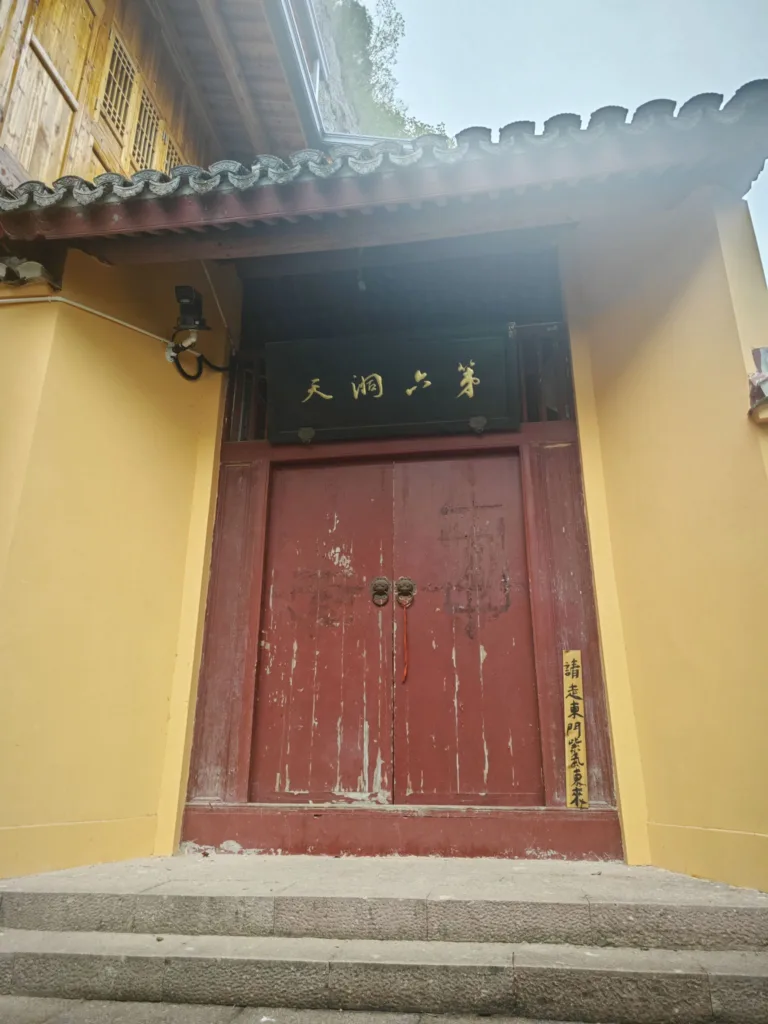
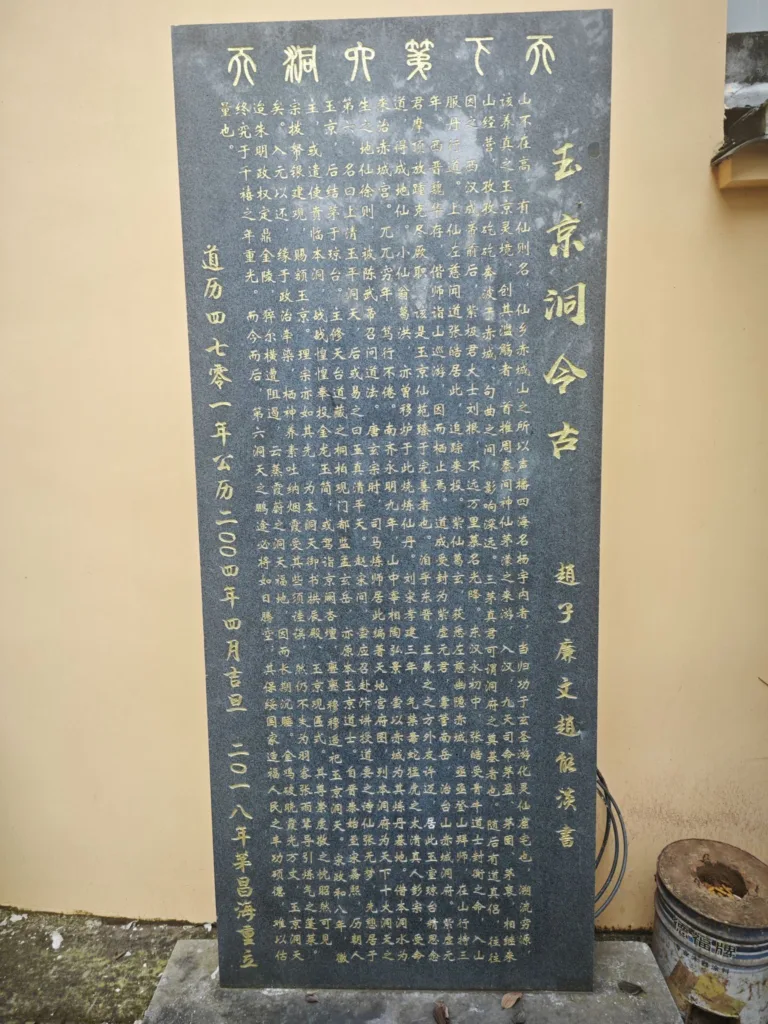
Tiantai City
Dinner was at a small local restaurant called Polygon Place, on the pedestrian street. The reviews on the ranking is quite high, inside the people are also quite a lot. The total cost is only 35 yuan, the food ordered is a bit like eating breakfast, there is what is called “eggplant hula too”, is a pancake breaded eggplant, especially delicious. Today, I ate two meals at Xinwang and here in one day, so I don’t know if this is considered special forces tourism.
The walk from the hotel back to the hotel is about 1 kilometer, this small county, except at night the streets are less crowded, the rest of the place I think it is not different from the big city.
7 o’clock back to the hotel, a long time no exercise, climbed down the mountain, calves sore as hell. When I think of Mount Tai is also easy to climb up, now a three hundred meters high Chicheng Mountain will be my tired. I’ll rest early, go to Guoqing Temple tomorrow, and then I’ll head to Linhai.